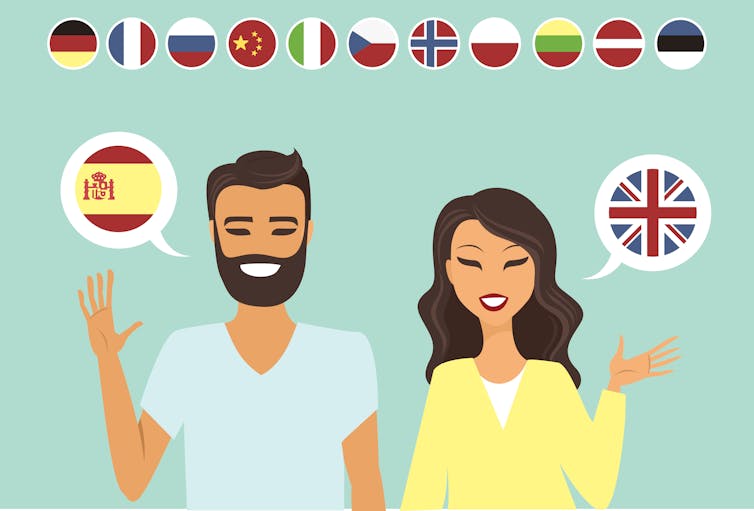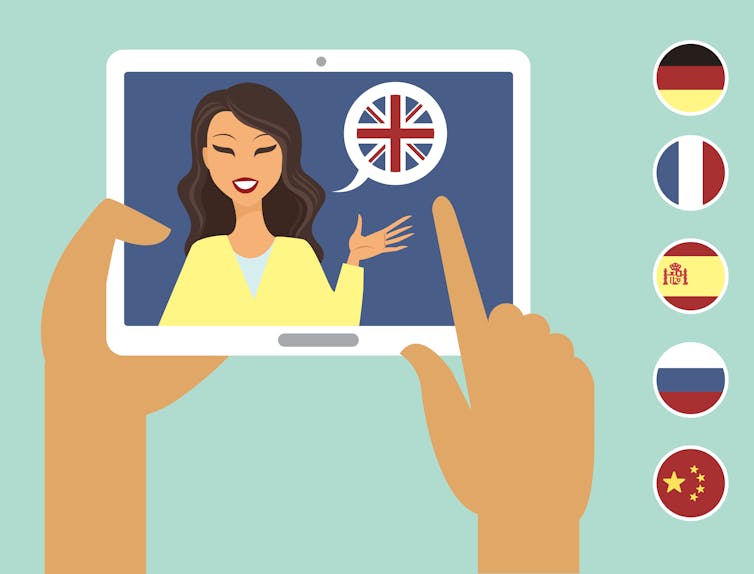How Easy is It for a Multilingual Person to Learn a New Language
Think back to when you first started learning a foreign language. For many readers it was probably French, German or Spanish at school.
I was one of those considered lucky enough to be "good at languages" and I studied all three. Like me though, I imagine you can remember friends who froze at the thought of speaking a second language in class.
The psychologist Albert Bandura called this "social persuasion" – I just call it fear of being shown up in front of your mates. Teachers often define this in terms of "having (or not having) a gift" – student A is good at languages but student B just isn't.
But there is another argument: that actually language learning has nothing to do with natural aptitude, and much more to do with other factors – such as your learning environment and exposure to language.
Noam Chomsky introduced a controversial idea about learning languages in the 1960s – known as the "language acquisition device". He suggested that children have an inbuilt universal grammar that enables them to learn any language. In short, learning a first language is easy because you are programmed from birth to be able to do it.
But this concept is a bone of contention among many researchers, because there are logical reasons to disagree with Chomsky's ideas as he presented them.
Linguistic toolkit
The linguist Yukio Otsu for example, made the valid point that the "language acquisition device" did not seem adaptable to different dialects and accents.
In other words "the device" would help you learn a standard form of English, but it might not help you learn something like Geordie or Bristolian ways of speaking from other parts of Britain.
Other research has questioned why some people learn languages slower than others. Because if Chomsky's device existed, then it should – theoretically – automatically activate at the same rate for every learner.

However, a recent study at Florida Atlantic University seems to imply that Chomsky's device may indeed exist – albeit one that behaves in a slightly different way.
The researchers were looking at the learning of vocabulary and grammar among students who spoke both English and Spanish as first languages. They found that the children developed a separate set of "tools" to cope with each language they learned.
The study was carried out with children in US schools, where both English and Spanish are spoken widely. The researchers found that as the childrens' English got better – due to being in a largely English speaking environment – their Spanish got steadily worse.
What this means in real terms, is that the students do not just have one "grammar" – or one universal set of rules that covers every language they learn. Because if the children were using the same "rules" or "resources" for learning both languages, the decline in Spanish wouldn't have happened. Instead, these students were able to create new grammars – or new tools – each one very different.
Language exposure
These findings are interesting because they hint at the brain being able to develop limitless sets of resources – each one unique to the additional language you learn – whether it's your first, second or even 20th language.
The team that carried out the study suggest that this barrier might be more environmental – based on language exposure – and so not linked to the brain at all.
Put that way, the suggestion that we already have the resources to learn as many languages as we like is possibly a game changer. This is because it could potentially create conditions for everyone – regardless of age or level – to master multiple languages at once.
Just input?
But while this new study shows the quality of a language learner's "input" to be key, this is not a major discovery in itself. The linguist and educational researcher Stephen Krashen has spent years arguing this to be the case.
The quality of "input" or the language exposure students receive is clearly a big factor in the learning of new languages. But how input is delivered could also be just as important. And this can be seen in the changing way students learn languages, both inside and outside the classroom.

We live in a digital world, where our students seem to be more and more inclined to try learning online. And this move towards online learning seems to be getting popular.
Studies have shown how different learners are in a virtual space. They take more risks with language and they appear to be less hesitant to participate. New communities develop in online spaces where students seem comfortable to share ideas, build networks and develop their knowledge together.
The increased use of virtual space means some students are starting to find their identity online. Suddenly, they are exploring their potential without fear of making mistakes.
Take away the fear factor in learning a language, and the possibilities are endless. And it could even mean that being multilingual becomes the norm rather than the exception.
Source: https://theconversation.com/you-too-could-be-multilingual-its-just-about-unlocking-the-skills-inside-74276


0 Response to "How Easy is It for a Multilingual Person to Learn a New Language"
Post a Comment